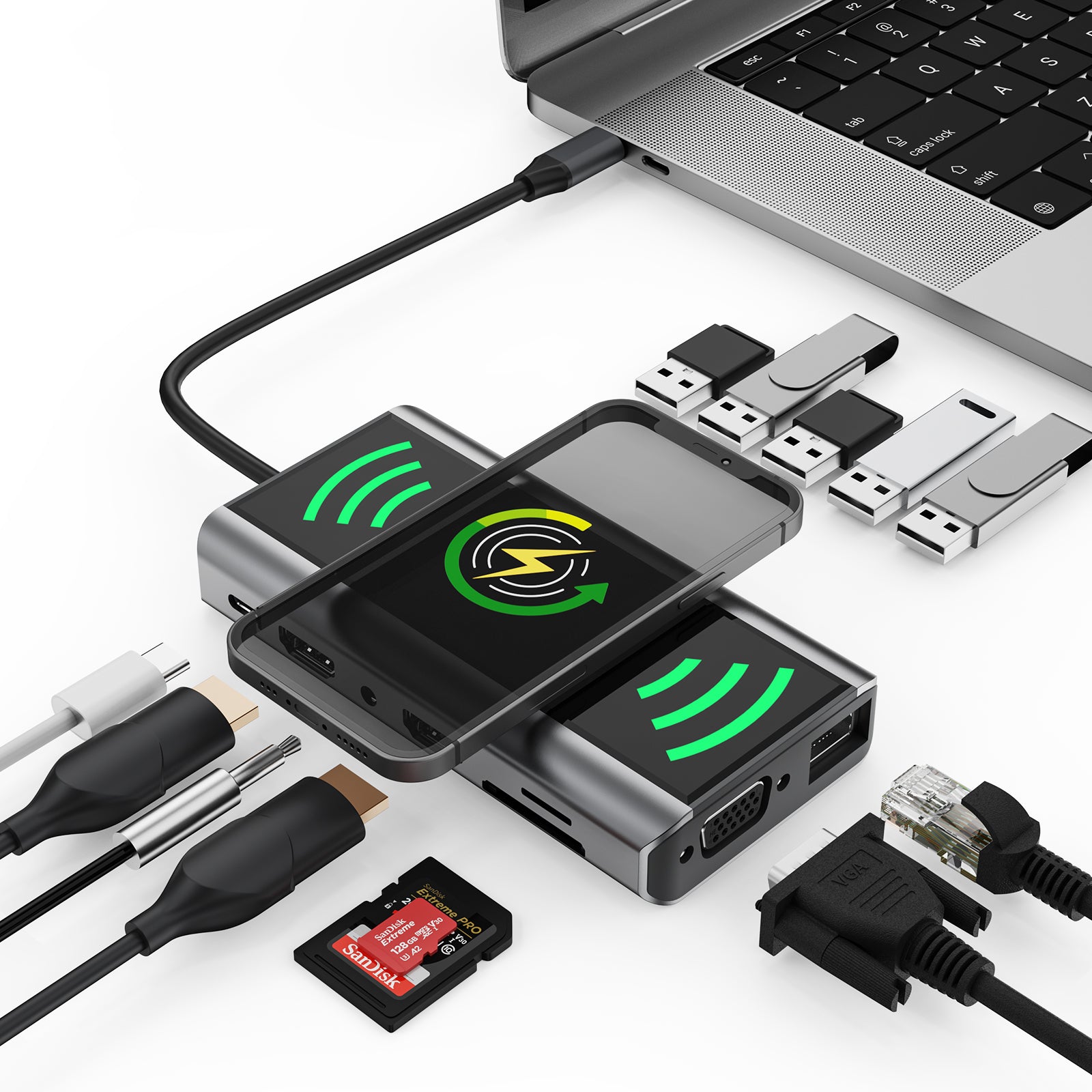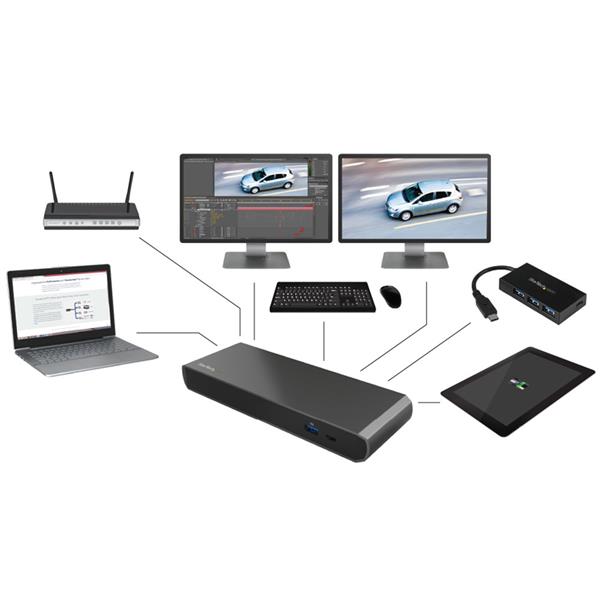Expanding your workspace with dual monitors can drastically improve productivity and the quality of your digital experience. To seamlessly integrate dual monitors into your setup, a reliable docking station is essential. This article explores the key features and factors to consider when choosing a docking station that can handle multiple displays, ensuring a smooth and efficient dual monitor experience.
Assessing Compatibility and Connectivity
Checking Device Compatibility
Before investing in a docking station, confirm that it is compatible with your computer’s operating system and hardware capabilities. While most modern docking stations support Windows and macOS, verifying compatibility prevents any unpleasant surprises post-purchase. Also, ensure that the docking station supports the connection ports available on your monitors, be it HDMI, DisplayPort, DVI, or VGA.
Variety of Ports for Extended Use
A good docking station should have a variety of ports to connect all your peripherals. Look for a station equipped with multiple video output ports to support dual monitors without the need for additional adapters. USB ports for accessories, Ethernet ports for network connections, and audio jacks for speakers or headsets are also important for a comprehensive workspace.

Prioritizing Performance and Display Quality
High Resolution and Refresh Rates
Docking stations vary in the display resolutions they can support, with some offering high-definition (HD), some 4K, and others even higher resolutions. If you intend to use high-resolution monitors, or if your work demands crystal-clear graphics, choose a docking station that can deliver the necessary resolution at an optimal refresh rate to prevent lag or screen tearing.
Graphic Card Compatibility
Consider the graphics card in your system as well; some docking stations come with their own integrated graphics solutions. If you rely on a dedicated graphics card for intensive tasks like video editing, gaming, or 3D design, ensure the docking station is capable of leveraging your computer’s GPU to deliver the best performance across both monitors.

Design and Ergonomics
Space-Saving and Port Management
The dock’s design can impact your desk setup. A compact, sleek docking station will occupy less desk space and help manage cable clutter. Vertical stands or under-monitor docks are good options for saving space, while horizontal stations may provide easier access to ports. Consider a station with cable management or additional features like built-in laptop stands to raise your device to eye level for better ergonomics.
Heat Dissipation
With multiple connections running through the docking station, heat can build up quickly, potentially impacting performance. Examine the station’s design for efficient heat dissipation. Stations with built-in fans or passive cooling designs, like ventilation grills, ensure that your setup remains cool even during heavy use.

Power Delivery and Charging Capabilities
Adequate Power Supply
To run all your devices effectively, the docking station must provide enough power. Assess the power output specifications, ensuring the dock can charge your laptop (if used) while powering both monitors and other connected peripherals. Some high-end docks offer high-wattage power delivery that can support even powerful laptops alongside other devices.
Charging for Peripherals
Additionally, some docking stations feature USB ports with fast-charging capabilities for smartphones, tablets, or accessories. These convenient charging points minimize the need for additional chargers on your desk, streamlining your power management.

Future-Proofing Your Investment
Upgradeable Firmware
In technology, change is a constant. Opt for docking stations that offer firmware updates so you can benefit from enhancements, bug fixes, and support for newer devices and standards over time. A station that allows firmware upgrades is a smart choice, helping you future-proof your investment and avoid obsolescence.
Advanced Technologies
Look for stations that incorporate newer technologies like Thunderbolt 3 or USB-C with alt mode, which combine data transfer, video output, and charging in one versatile cable. With these cutting-edge connections, your workstation becomes flexible and ready for future developments in monitor and peripheral technology.

Ensuring Ease of Use and Accessibility
Plug-and-Play Functionality
A docking station should be as hassle-free as possible, offering plug-and-play functionality to avoid complicated installation processes. Look for docks that do not require additional drivers or have software that easily integrates with your system for a quick setup. This convenience is particularly valuable for professionals who need to disconnect and reconnect their laptops frequently.
Easy-to-Access Ports
The layout of ports on your docking station can affect your daily interactions with your setup. Choose a docking station with intuitively placed ports that allow for easy plugging and unplugging of devices. This means having commonly used ports like USB and audio jacks within easy reach while keeping video and power cables in a more static position to reduce interference.
Customization and Control Features
Software Integration
Some advanced docking stations come with proprietary software that lets you customize settings to suit your dual monitor setup. This software can offer control over display arrangements, resolution settings, and even special features like color calibration. Features like these give users the ability to tweak their workstation to their precise needs, optimizing the dual monitor experience.
Custom Display Options
Beyond basic arrangements, look for docking stations that support advanced display configurations. This includes the ability to extend or mirror displays, adjust brightness settings for each monitor separately, and manage color profiles. These custom display options can greatly enhance multitasking, making it easier to manage work across two screens.
Considering Cost and Value
Price Points and Brand Reputation
Docking stations can vary significantly in price, so consider how the features of a dock align with its cost. More expensive docking stations may offer premium build quality, more port options, and higher power outputs. Evaluate the reputation of the brand for reliability and customer support, as well as warranty offerings, to ensure value for your investment.
Assessing Needs Against Features
Ultimately, the docking station you choose should align with your specific needs without paying for unnecessary extras. If you don’t require high-end features like 4K resolution or Thunderbolt 3 connectivity, a simpler docking station might provide a better value. Conversely, if you anticipate needing advanced features, investing in a higher-end model now could save money in the long run as your workstation evolves.
Choosing a docking station that enhances your dual monitor experience requires a balance of performance, design, and forward-thinking features. By considering device compatibility, connectivity options, display support, ergonomics, power delivery, and room for future upgrades, you’ll acquire a capable hub that transforms your workstation. The right docking station not only simplifies cable management but also ensures consistent, high-quality output across both monitors, providing a seamless and productive workspace.